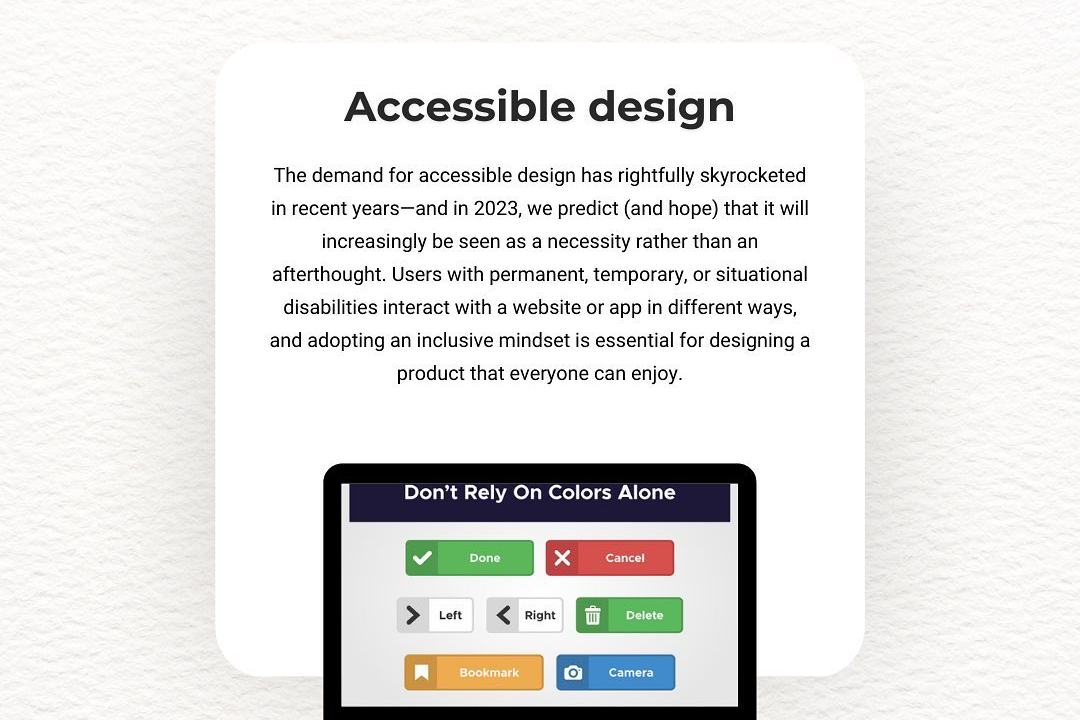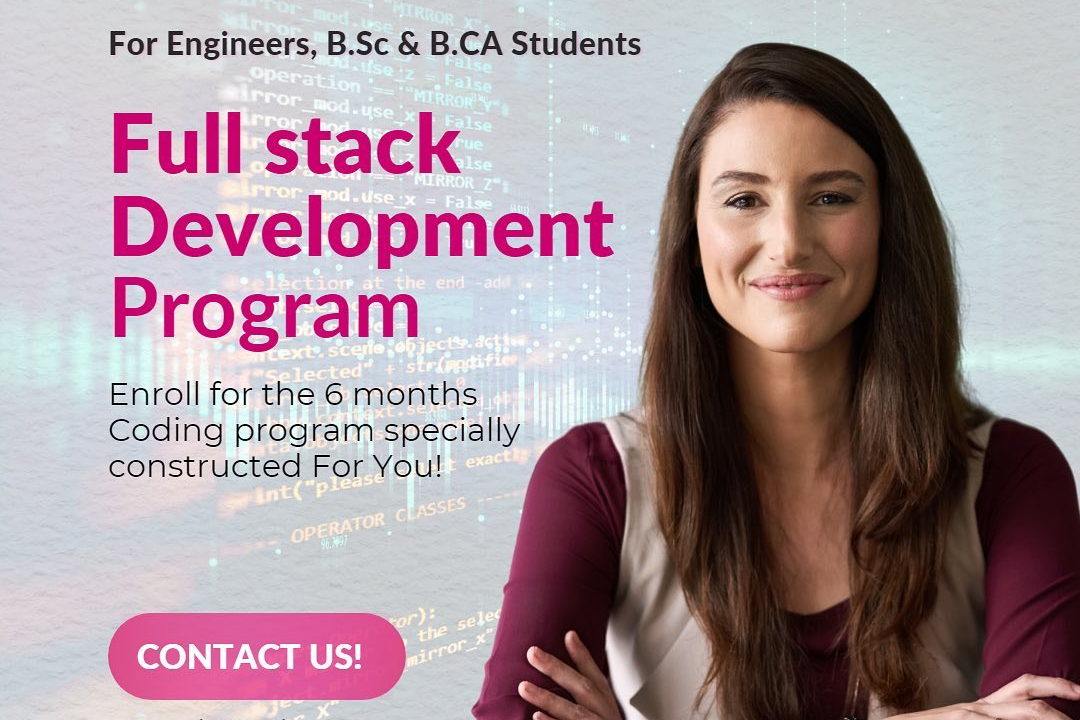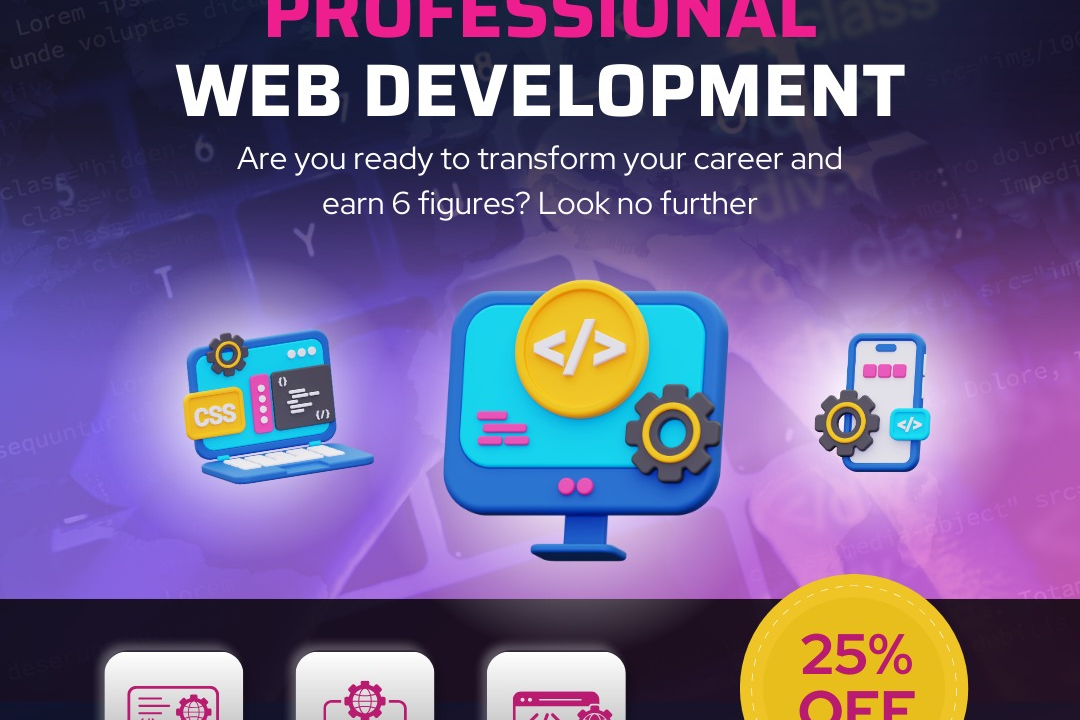Laravel Interview Questions And Answers Pdf Download
Essential Laravel Interview Questions and Answers: Free PDF Download
Laravel Interview Questions And Answers Pdf Download
The “Laravel Interview Questions and Answers” PDF download serves as a valuable resource for both aspiring and experienced developers preparing for interviews in the web development field. It consolidates essential questions and answers related to Laravel, one of the most popular PHP frameworks used for building web applications. By reviewing this material, candidates can familiarize themselves with common topics and technical concepts, enhancing their understanding and boosting their confidence during interviews. Additionally, this PDF provides insights into practical applications and real-time scenarios, equipping job seekers with the knowledge required to demonstrate their expertise effectively. For anyone looking to secure a position in Laravel development, this resource is an indispensable tool for success.
To Download Our Brochure: https://www.justacademy.co/download-brochure-for-free
Message us for more information: +91 9987184296
1 - What is Laravel?
Laravel is a popular open source PHP framework designed for building web applications with an elegant syntax that promotes clean and maintainable code.
2) What are the key features of Laravel?
Laravel offers features such as Eloquent ORM, routing, caching, sessions, authentication, and Blade templating engine, all of which facilitate efficient web development.
3) What is Eloquent in Laravel?
Eloquent is Laravel's built in Object Relational Mapping (ORM) framework, which supports Active Record implementation and allows developers to interact with the database using an expressive syntax.
4) How does Laravel handle routing?
Laravel uses a simple and intuitive routing system that allows developers to define routes in the `routes/web.php` file, supporting closures and controller methods for organizing the application flows.
5) What is Middleware in Laravel?
Middleware in Laravel is a type of filtering mechanism that provides a way to examine and modify HTTP requests entering the application, enabling tasks like authentication and logging.
6) What is Blade in Laravel?
Blade is Laravel's powerful templating engine that allows developers to create dynamic views using simple syntax, making it easy to utilize template inheritance and variables.
7) Explain the concept of service providers in Laravel.
Service providers are central to the Laravel application, responsible for bootstrapping and registering application services, allowing for efficient dependency management.
8) What are Laravel migrations?
Migrations are version control for your database schema in Laravel, enabling developers to create, modify, and share the database schema easily, ensuring consistent application updates.
9) How does Laravel implement authentication?
Laravel provides a straightforward authentication system out of the box, featuring user registration, login, password resets, and user verification handled by built in controllers.
10) What is the significance of the .env file in Laravel?
The .env file is a configuration file that contains environment specific variables, allowing developers to store sensitive information like database credentials securely.
11 - How can you create a custom command in Laravel?
You can create a custom command in Laravel using the `artisan make:command CommandName` command, which generates a new class in the `app/Console/Commands` directory to define command behavior.
12) What is the purpose of the `artisan` command line interface?
The Artisan command line interface provides a set of helpful commands for performing repetitive tasks, managing database migrations, running tests, and more, streamlining the development process.
13) What is Laravel's approach to error handling?
Laravel utilizes a built in error handling mechanism that uses the `App\Exceptions\Handler` class to manage exceptions and provide friendly error pages or logs.
14) Explain the Laravel task scheduling feature.
Laravel's task scheduling allows developers to define scheduled tasks using a fluent interface, enabling automated command execution at specified intervals via the `schedule` method in the `App\Console\Kernel` class.
15) What is the role of the Repository Pattern in Laravel?
The Repository Pattern decouples the business logic from data access code, improving code organization and testability by centralizing data retrieval logic in dedicated classes.
16) What is Laravel Mix?
Laravel Mix is a powerful asset compilation tool that provides a fluent API for defining build steps for your JavaScript, CSS, and other assets, utilizing Webpack under the hood.
17) How does Laravel implement database seeding?
Laravel allows developers to seed the database with test data using seed classes, which can be created via the `artisan make:seeder SeederName` command, and populated with fake or predefined data.
18) What are Form Requests in Laravel?
Form Requests are custom request classes that encapsulate validation logic, allowing for more organized and reusable validation rules across controllers without cluttering controller methods.
19) What is Laravel’s Routing Parameter?
Routing parameters are dynamic segments in URLs that allow passing variables to the routes. They are defined using curly braces, for example, `{id}`, making it possible to capture user input from the URL.
20) What is Laravel's event and listener system?
Laravel's event and listener system provides a way to decouple your application's various parts, allowing events to be fired and listeners to react to them without direct interaction.
21 - How can you implement API authentication in Laravel?
API authentication in Laravel can be accomplished using the Passport or Sanctum packages, which provide OAuth2 server implementation and simple API token verification, respectively.
22) What is the purpose of Laravel queues?
Laravel queues allow developers to defer the processing of time consuming tasks, such as sending emails or processing uploads, to improve web application responsiveness.
23) What are policies in Laravel?
Policies are classes that organize authorization logic around a particular model or resource, allowing developers to control user permissions in a clean and straightforward manner.
24) How can you implement localization in Laravel?
Localization in Laravel can be done by using language files stored in the `resources/lang` directory, allowing applications to support multiple languages by translating strings dynamically.
25) What is the use of the storage facade in Laravel?
The storage facade provides a unified API for file storage, allowing developers to work with local files, cloud based storage, and more without needing to change the codebase.
26) Explain how Laravel handles CSRF protection.
Laravel automatically generates CSRF tokens for each user session, incorporated in forms as hidden fields, protecting applications from cross site request forgery attacks.
27) What is the significance of policy and gates in Laravel?
Policies and gates are essential for implementing authorization in Laravel applications, where gates are simple closures, and policies are classes that handle broader resource based permissions.
28) How does Laravel support caching?
Laravel supports various caching systems, enabling developers to significantly increase application performance by storing frequently accessed data in memory, file, or database.
29) What are events in Laravel?
Events in Laravel provide a simple observer pattern implementation that allows developers to create event classes, dispatch events, and handle them using listeners for enhanced application architecture.
30) Explain the concept of the Service Container in Laravel.
The Service Container is a powerful dependency injection container in Laravel that manages the instantiation and resolution of classes and dependencies, promoting better organization and testability.
31 - What is the role of the `public` folder in a Laravel project?
The `public` folder acts as the entry point for web requests, containing publicly accessible files like CSS, JavaScript, and images, along with the `index.php` file that bootstraps the Laravel application.
32) How to implement file uploads in Laravel?
File uploads in Laravel can be managed easily using the built in file upload functionality, which allows developers to handle incoming files, validate uploads, and store them securely in specified directories.
33) What are Laravel's built in validation rules?
Laravel comes with a variety of built in validation rules that can be applied in Form Requests or controllers, including rules for required fields, data types, unique constraints, and custom rules.
34) How does Laravel support RESTful resource controllers?
Laravel's resource controllers provide a structured approach to creating RESTful APIs with predefined methods like `index`, `show`, `store`, `update`, and `destroy`, simplifying routing and action handling.
35) What is the significance of the `config` directory in Laravel?
The `config` directory holds all application configuration files, allowing developers to define settings for database connections, caching, sessions, and more, promoting centralized configuration management.
Each of these points provides an overview of features and concepts fundamental to Laravel and can serve as a basis for deeper exploration in an educational context or certification course.
Course Overview
The “Laravel Interview Questions and Answers PDF Download” course is designed to equip aspiring developers and professionals with essential knowledge and insights into Laravel, one of the most popular PHP frameworks. This comprehensive resource covers a wide range of topics, including routing, middleware, controllers, views, and security features, alongside practical interview questions that employers often ask. By providing detailed explanations and example answers, this course helps students enhance their understanding of Laravel, prepare effectively for interviews, and build confidence in their ability to demonstrate their skills in real-world scenarios. Whether you are a beginner looking to grasp fundamental concepts or an experienced developer aiming to brush up on your expertise, this course is an invaluable tool in your preparation for a successful career in web development.
Course Description
The “Laravel Interview Questions and Answers PDF Download” course offers a comprehensive resource for developers seeking to enhance their knowledge of Laravel and prepare for job interviews. This course covers essential concepts of the Laravel framework, including routing, middleware, controllers, and security features, while providing a curated list of frequently asked interview questions and detailed answers. Ideal for both beginners and experienced developers, this course aims to boost confidence and reinforce understanding, ensuring that participants are well-equipped to tackle real-world challenges and impress potential employers in the fast-evolving tech landscape. Download the PDF today to take the next step in your career!
Key Features
1 - Comprehensive Tool Coverage: Provides hands-on training with a range of industry-standard testing tools, including Selenium, JIRA, LoadRunner, and TestRail.
2) Practical Exercises: Features real-world exercises and case studies to apply tools in various testing scenarios.
3) Interactive Learning: Includes interactive sessions with industry experts for personalized feedback and guidance.
4) Detailed Tutorials: Offers extensive tutorials and documentation on tool functionalities and best practices.
5) Advanced Techniques: Covers both fundamental and advanced techniques for using testing tools effectively.
6) Data Visualization: Integrates tools for visualizing test metrics and results, enhancing data interpretation and decision-making.
7) Tool Integration: Teaches how to integrate testing tools into the software development lifecycle for streamlined workflows.
8) Project-Based Learning: Focuses on project-based learning to build practical skills and create a portfolio of completed tasks.
9) Career Support: Provides resources and support for applying learned skills to real-world job scenarios, including resume building and interview preparation.
10) Up-to-Date Content: Ensures that course materials reflect the latest industry standards and tool updates.
Benefits of taking our course
Functional Tools
1 - Laravel Framework: The primary tool used in the course is the Laravel framework itself. Students gain hands on experience with Laravel, an open source PHP framework known for its elegant syntax and powerful features. The course covers essential components, including routing, middleware, controllers, and Eloquent ORM, which allows developers to interact with their database seamlessly. Learning Laravel equips students with the skills to build and maintain web applications efficiently, as they become familiar with its core functionalities and best practices.
2) Composer: Composer is a dependency management tool for PHP that is extensively used in Laravel projects. In the course, students learn how to utilize Composer for managing libraries and packages, ensuring their Laravel applications are robust and maintainable. By mastering Composer, learners understand how to integrate third party tools and components, streamline their development process, and maintain version control effectively, which is crucial for professional development environments.
3) MySQL Database: A fundamental tool covered in the course is MySQL, a popular relational database management system. Students learn how to design, create, and manage databases using MySQL in conjunction with Laravel's Eloquent ORM. This knowledge allows students to handle data efficiently, execute complex queries, and ensure data integrity within their applications. Understanding MySQL is essential for any web developer, as it forms the backbone of data storage in Laravel projects.
4) Postman: Postman is an intuitive API testing tool that students use to test and document their API endpoints during the course. By learning to use Postman, learners can send requests to their Laravel applications and analyze responses, making it easier to debug and ensure that their applications work as intended. This practical experience of working with APIs is critical for today’s web developers, as it enhances their ability to build and integrate complex applications.
5) Version Control with Git: The course incorporates Git, a distributed version control system that allows developers to track changes in their codebase. Students learn to use Git for version control alongside their Laravel projects, gaining skills in branching, merging, and collaborating with other developers. Mastery of Git is essential for any developer working in a team environment, as it ensures code integrity and facilitates better project management.
6) Visual Studio Code (VS Code): Visual Studio Code is a widely used code editor among web developers, and the course teaches students how to utilize its powerful features. Students learn about extensions that enhance productivity, such as Laravel snippets, live server capabilities, and debugging tools. Having proficiency in VS Code enables learners to write, test, and debug their Laravel applications efficiently, positioning them well for success in real world development scenarios.
Through this comprehensive training program, students enhance their technical skills and gain familiarity with the industry standard tools that are essential for Laravel development. This combination of practical experience and theoretical knowledge prepares them for successful careers in web development.
Certainly! Here are additional points that highlight more tools and methodologies integral to the Laravel course offered by JustAcademy:
7) Artisan CLI: Laravel's Artisan command line interface (CLI) is another critical tool covered in the course. Students learn to use Artisan for various tasks, including creating migrations, running tests, and generating boilerplate code. Understanding how to effectively leverage Artisan enhances productivity and allows developers to automate repetitive tasks, making the development process more efficient and streamlined.
8) RESTful APIs: The course places a strong emphasis on building RESTful APIs with Laravel. Students learn how to create, read, update, and delete resources using REST principles. This knowledge is crucial for developing modern web applications that often rely on APIs for communication between the frontend and backend. By mastering RESTful architecture, learners gain the ability to design scalable and maintainable applications.
9) Testing with PHPUnit: Quality assurance is vital in software development, and the course includes an introduction to testing with PHPUnit, the testing framework used in Laravel. Students learn to write unit tests and feature tests, ensuring their code is reliable and functions as expected. Gaining skills in testing prepares developers to create high quality applications that meet business requirements and are less prone to bugs.
10) Blade Templating Engine: Laravel’s Blade templating engine is another key feature taught in the course. Students learn how to create dynamic views using Blade, allowing them to build reusable templates and manage layouts effectively. This knowledge empowers developers to create visually appealing and user friendly web applications while adhering to best practices in front end development.
11 - Middleware: The course provides in depth coverage of middleware, which allows developers to filter HTTP requests entering their application. Students learn how to create and use custom middleware for various tasks, such as authentication and logging. Understanding middleware is essential for enhancing application security and ensuring that requests are processed efficiently.
12) Authentication and Authorization: Security is a top priority for any application, and the course covers Laravel's built in authentication and authorization features. Students learn to implement user registration, login, password resets, and role based access control. Gaining expertise in user authentication prepares learners to create secure applications that protect sensitive user data.
13) Queue Management: The course also introduces students to Laravel’s queue management system, which is a critical tool for handling tasks asynchronously. By learning to implement queued jobs, students can improve application performance and user experience by offloading time consuming tasks to run in the background.
14) Laravel Mix: Students learn about Laravel Mix, a wrapper around Webpack that simplifies asset compilation. The course includes instruction on compiling JavaScript, SASS, and CSS files, as well as optimizing assets for production. Proficiency in asset management ensures that applications are fast and efficient, providing an enhanced user experience.
15) Deployment on Cloud Platforms: The course covers best practices for deploying Laravel applications on popular cloud platforms, such as AWS and Heroku. Students learn the steps involved in deploying their projects, including server configuration, environment setup, and database migration. This knowledge is crucial for preparing learners to operate in real world development environments and manage application lifecycle effectively.
16) Building Real Time Applications with Laravel Echo: The course includes an introduction to Laravel Echo, a tool for building real time applications with WebSockets. Students learn how to implement live notifications and real time updates, which are increasingly important for modern web applications. Mastering these skills positions learners to create interactive and responsive user experiences.
17) Integrating Frontend Frameworks: Students are exposed to integrating Laravel with popular frontend frameworks such as Vue.js or React. The course covers how to set up a seamless interaction between Laravel’s backend and these powerful frontend libraries, providing a holistic view of full stack development.
By exploring these additional components in the Laravel curriculum, JustAcademy ensures that students receive a well rounded education, preparing them for various challenges in the web development landscape. Each topic and tool emphasized throughout the course builds a strong foundation for a successful career as a Laravel developer.
Browse our course links : https://www.justacademy.co/all-courses
To Join our FREE DEMO Session:
This information is sourced from JustAcademy
Contact Info:
Roshan Chaturvedi
Message us on Whatsapp:
Email id: info@justacademy.co
Android Frameworks











